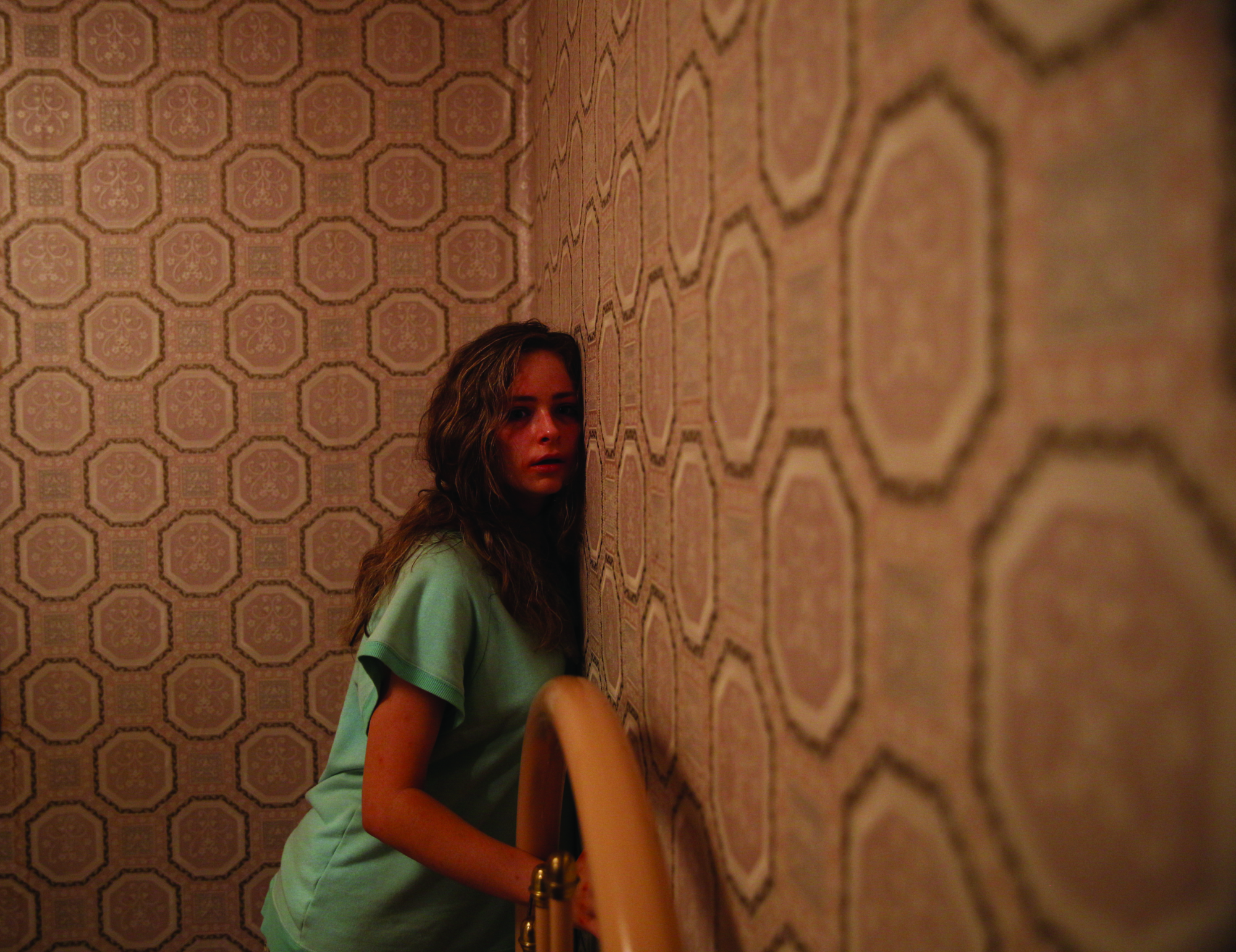It’s hard to imagine a stronger reception for Australian director Ben Young’s feature debut, Hounds of Love (2016), a period piece about a pair of suburban serial killers. Its premiere at last year’s Venice Film Festival prompted rave reviews: Variety described it as a ‘bold film’ and a ‘calling card not soon forgotten’,[1]Eddie Cockrell, ‘Venice Film Review: Hounds of Love’, Variety, 1 September 2016, <http://variety.com/2016/film/reviews/hounds-of-love-review-1201850187/>, accessed 2 May 2017. while both The Hollywood Reporter[2]‘Hounds of Love benefits from impressive control of visuals to build suspense and from the spiky performances of its fearless cast, flagging Young as a talent to watch’; see David Rooney, ‘Hounds of Love: Venice Review’, The Hollywood Reporter, 2 September 2016, <http://www.hollywoodreporter.com/review/hounds-love-venice-review-925516>, accessed 2 May 2017. and ScreenDaily[3]‘Hounds of Love marks Young as a filmmaker to watch’; see Sarah Ward, ‘Hounds of Love: Venice Review’, ScreenDaily, 31 August 2016, <http://www.screendaily.com/reviews/hounds-of-love-venice-review/5108830.article>, accessed 2 May 2017. identified Young as a director ‘to watch’. Indeed, Young has since used the success of the film to springboard his career, signing with United Talent Agency (UTA) and setting himself up to direct upcoming sci-fi film Extinction.[4]Mike Fleming Jr, ‘Hounds of Love Helmer Ben Young Set to Direct Extinction’, Deadline, 19 October 2016, <http://deadline.com/2016/10/hounds-of-love-ben-young-extinction-james-mcavoy-1201839431/>, accessed 2 May 2017.
Despite such success, Hounds of Love is not necessarily geared towards the mainstream. It’s a tough watch. The film’s disturbing subject matter prompted walkouts at its Venice premiere,[5]Rooney, op. cit. and even those aforementioned reviews describe it as a ‘harrowing ride’ for ‘[b]rave audiences’[6]Cockrell, op. cit. that’s ‘compelling if you have the stomach for this kind of punishing material’.[7]Rooney, op. cit. Apparently aware of the need to frame the film correctly at its Australian premiere at the now-defunct Brisbane Asia Pacific Film Festival (BAPFF), Young and star Stephen Curry were quick to prepare audiences: ‘I apologise in advance if anyone expected The Castle [Rob Sitch, 1997],’ warned the latter. ‘This isn’t The Castle.’

Not that such warnings were sufficient. While not especially gratuitous, the film pulls no punches in depicting the realities of the abduction, torture and rape inflicted on its unfortunate teenage protagonist, Vicki (Ashleigh Cummings), by her captors, married couple John (Curry) and Evelyn White (Emma Booth). It’s certainly not a film to everyone’s tastes, as I discovered at BAPFF’s closing-night festivities. A stranger I’d struck up a conversation with over a drink or two expressed their undisguised disgust at the film, which they found offensive and ‘unnecessary’.
Part of what makes Hounds of Love such an uncomfortable watch is how strongly it sympathises with Evelyn. She’s as trapped in her toxic relationship with John as Vicki is trapped in their household.
It’s an understandable reaction. I had much the same reaction to a similar film, Justin Kurzel’s Snowtown (2011), which, I felt, blurred the lines between acknowledgement and exploitation of real-life tragedy. Hounds of Love isn’t telling a true story; at BAPFF, Young noted that he’d researched nine real murderous couples to make his film ‘as believable as possible’ and that ‘there was a couple in Perth who did something similar, but this isn’t their story’. Still, there’s something undeniably queasy about being a witness to the events depicted here. Hounds of Love sets itself apart from its more fantastical forebears – films like Halloween (John Carpenter, 1978) and The Loved Ones (Sean Byrne, 2009) – by unapologetically adopting a realist aesthetic that reminds us terrible things like this can and have happened to innocent people.
If Young had approached this kind of story without insight, without any attempt to do more than shock and disturb his audiences, then I could sympathise with the fellow from closing night. However, I’d argue that characterising Hounds of Love as ‘torture porn’ or the like elides Young’s attempts to unpack the personal politics underpinning real-world violence against women, which has its grounding in power and domestic violence more so than the masked, spectral killers so beloved by horror filmmakers. As it progresses, Hounds of Love evolves into a character study, gradually unpicking the societal fabric that makes these cases so terrifyingly common.
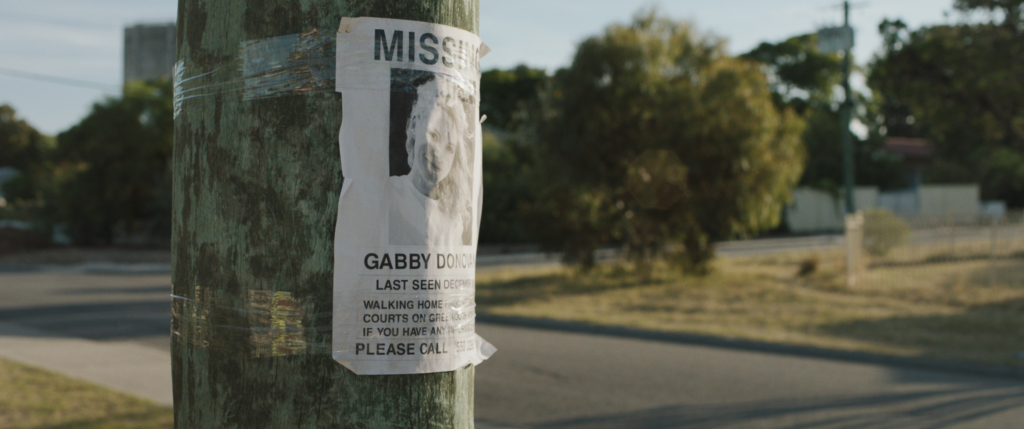
Acceptable in the eighties
An appropriate setting is critical to successful horror. The choice to set Hounds of Love in Perth in December 1987 is partly one of convenience; in an interview for SBS Movies, Young explained that
it made the writing a lot easier by putting it in the ’80s, plus it gave me the opportunity to use some music that I like and grew up listening to […] Also the film was really, really low budget and so much of Western Australia was built in the ’80s and it looks exactly the same as it did then. So it’s a cheap way to give the film an aesthetic.[8]Ben Young, quoted in Helen Barlow, ‘Venice Film Festival: Ben Young and Emma Booth on Serial Killers and ’80s Music in Hounds of Love’, SBS Movies, 2 September 2016, <http://www.sbs.com.au/movies/article/2016/09/02/venice-film-festival-ben-young-and-emma-booth-serial-killers-and-80s-music-hounds>, accessed 2 May 2017.
Though the majority of Hounds of Love is spent in the threadbare confines of John and Evelyn’s house, among ancient linoleum and op-shop furniture, the specificity of the narrative’s location is far from incidental. It’s not just that the Western Australian setting evokes the memory of real Perth serial killers like David and Catherine Birnie or the Claremont serial murders, but also how Young uses the margins of the story to flesh out the film’s sociopolitical subtext. The sweltering sparseness of Perth’s suburbs – empty streets and sprawling expanses of yellowing grass – suggests a fragile innocence within which John and Evelyn’s nefarious activities are permitted to thrive.
Within the film, that innocence is reinforced by the Christmas accoutrements – John and Evelyn augment their earnings by stealing money-laden Christmas cards – and the hoary trope of oblivious police officers. Our serial-killer couple are so confident in the police department’s mediocrity that they schedule their abductions for the weekend, knowing that the police won’t investigate missing people until Monday – by which point it’s too late. Indeed, the attempts of Vicki’s mum, Maggie (Susie Porter), and boyfriend, Jason (Harrison Gilbertson), to have the cops take her disappearance seriously prove fruitless.
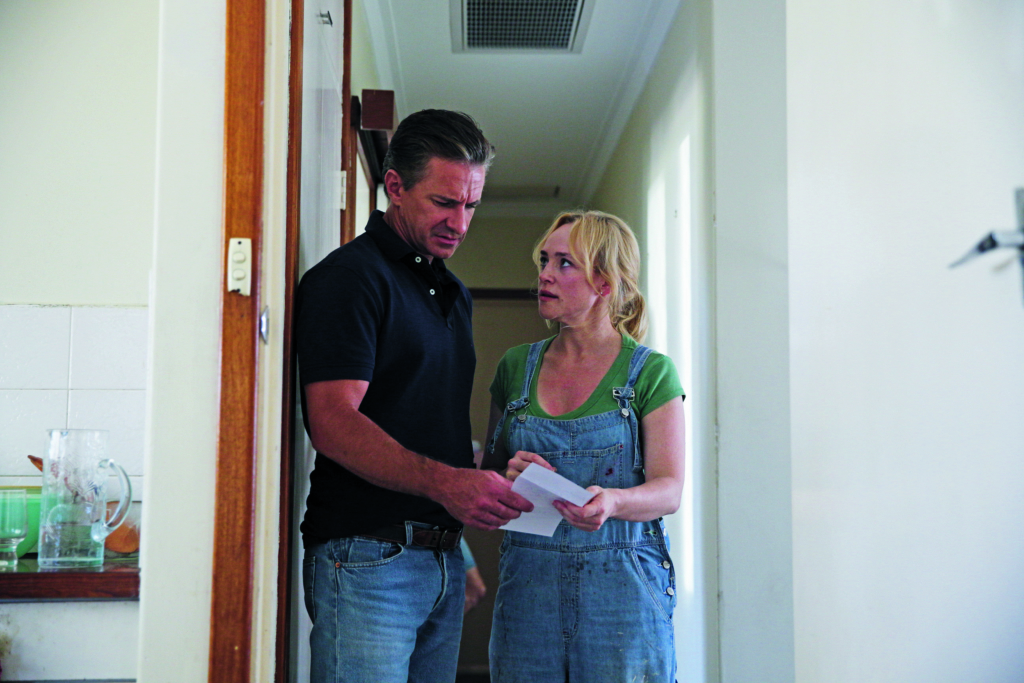
Beyond such institutional inadequacies, this is an environment that allows Evelyn to become a victim of domestic violence and, in turn, a perpetrator of violence, yet she’s denied the independence she clearly craves. When an aborted escape attempt by Vicki attracts the attention of the couple’s next-door neighbour, his reaction to the kerfuffle indicates a recognition of the aggressive control John exerts over his partner. Yet – as is so common in real-life instances of domestic violence – he makes no serious attempt to intervene.
Part of what makes Hounds of Love such an uncomfortable watch is how strongly it sympathises with Evelyn. She’s as trapped in her toxic relationship with John as Vicki is trapped in their household. While the screenplay carefully avoids excusing her murderous actions, we are nonetheless given insights into her situation. We come to understand her even as we revile her, a delicate balance made possible by Booth’s precise performance. Curry, too, is excellent, embodying a sociopathic monster with enough charm to manipulate Evelyn, exploiting both her desperate desire to regain custody of her children from a previous relationship and her insecurities, stemming from an implied history of abuse. That dynamic is best encapsulated by this exchange, immediately after Vicki’s unsuccessful escape attempt:
EVELYN: I love you.
JOHN: What was that?
EVELYN: I love you!
JOHN: Then how would you feel if you never saw me again? But that’s exactly what’d happen if she got out that window.
Such emotional manipulation is not relegated to serial killers alone. We don’t get to see much of the relationship between Vicki’s separated parents, Maggie and Trevor (Damian de Montemas). What we do see, however, suggests a more socially acceptable kind of power imbalance, whereby Trevor – a wealthy surgeon – dominates the relationship. Vicki’s familiarity with this kind of tense domesticity helps her to exploit Evelyn’s insecurities in her own way, but the film also suggests that Vicki has internalised the strict gender roles her father would presumably prefer. Early in the film, when Maggie protests that she’s trying to give her daughter ‘every opportunity [she] can’, Vicki scornfully spits back, ‘So, what, I can become a strong independent woman like you?’
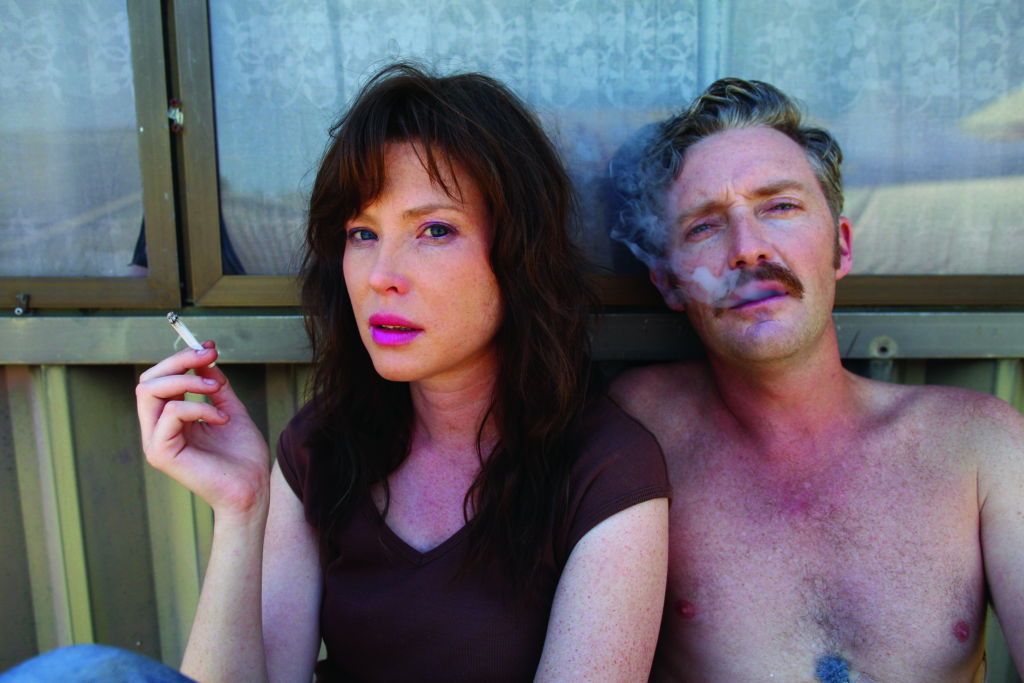
Strong, independent women
Introducing his film at BAPFF, Young described it as being ‘about co-dependency and control’. Accordingly, Hounds of Love is more interested in depicting how its female characters are manipulated than in specifically chronicling the suffering enacted on Evelyn and John’s victims. (While little actual violence is depicted on screen, montages of bloodied wire and sex toys leave little to the imagination – they’re arguably more stomach-churning than any visual-effects team’s gore could have been.) Despite opening with objectifying close-ups of teenage netballers, lent a sinister air by super-slow-motion cameras shooting at 1000 frames per second,[9]Factor 30 Films, Hounds of Love press kit, 2016, p. 14. Hounds of Love resists and interrogates the horror paradigm of victimised women.
Of course, horror isn’t an inherently unwelcome genre for ‘strong female characters’. There are about as many opinions on the subject as there are horror films, but a 2009 study that found that ‘[m]ale characters in slasher horror films are more likely to experience relatively quick, graphic, and serious acts of violence’ while their female counterparts ‘are more likely to be victims of less serious and less graphic forms of violence, such as stalking or confinement’[10]Andrew Welsh, ‘Sex and Violence in the Slasher Horror Film: A Content Analysis of Gender Differences in the Depiction of Violence’, Journal of Criminal Justice and Popular Culture, vol. 16, no. 1, 2009, available at <http://www.albany.edu/scj/jcjpc/vol16is1/Welsh.pdf>, accessed 2 May 2017, p. 18. gels with my impression from having watched (probably too many) horror movies.
While I don’t regard horror films with female victims as inherently anti-women or anti-feminist, they do tend to ignore the realities of violence against women in favour of a stylised, cinematic violence. Hounds of Love might be stylistic, but never at the expense of stomach-churning realism. As such, it risks offending audiences unaccustomed to such realism in their horror films while embedding its depictions of violence against women in a context closer to reality. A 2015 study determined that, of the 1615 women killed by men in the US in 2013, ‘94 percent […] were murdered by someone they knew. Of the victims who knew their offenders, 62 percent were wives or other intimate acquaintances of their killers.’[11]‘More than 1,600 Women Murdered by Men in One Year, New Study Finds’, media release, Violence Policy Center, 15 September 2015, <http://www.vpc.org/press/more-than-1600-women-murdered-by-men-in-one-year-new-study-finds/>, accessed 2 May 2017.
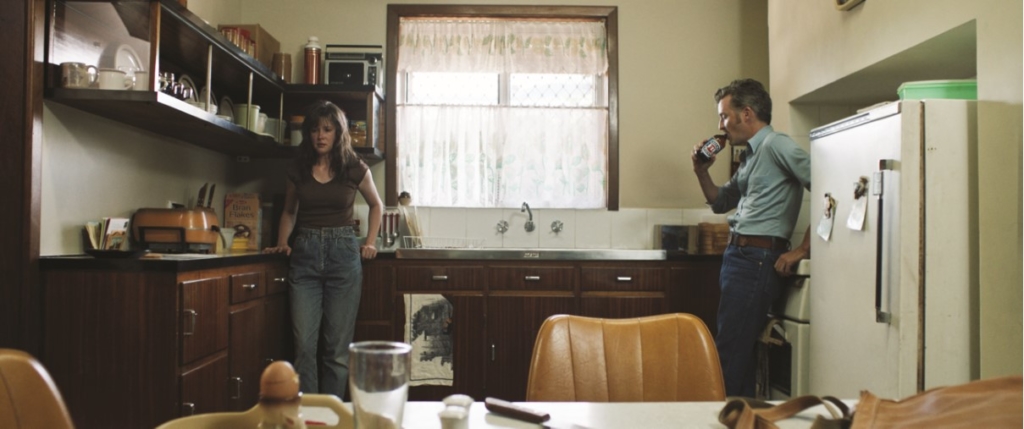
The killers of Hounds of Love, granted, operate within the 6 per cent slice – presuming the American figures align with those of Australia – with John and Evelyn’s victims chosen opportunistically rather than from their social circle (Vicki, for instance, is snatched on the street while on her way to a house party). While the narrative here is not explicitly one of domestic violence, the mechanisms with which the film operates – John’s manipulation of Evelyn, the power imbalance within Vicki’s family, even the way Vicki is able to erode Evelyn’s already shaky self-confidence – place Hounds of Love’s portrayed violence on a continuum closer to the way violence against women operates in the real world than most of the film’s contemporaries.
Indeed, I suspect that verisimilitude is what makes the film so disturbing to those who walked out at Venice or to the cinema-goer I spoke to in Brisbane. Most horror films strive for an escapist register, one that terrifies us with the potential for violence while implicitly assuring us that we’re safe: our house is not haunted, we’re not being stalked by Jason Voorhees,[12]The monstrous antagonist of the Friday the 13th franchise. and the calls are not coming from inside the house. To acknowledge that psychological violence, particularly against women, is embedded into the fabric of our society is infinitely more frightening.
http://www.houndsoflovemovie.com
Endnotes
| 1 | Eddie Cockrell, ‘Venice Film Review: Hounds of Love’, Variety, 1 September 2016, <http://variety.com/2016/film/reviews/hounds-of-love-review-1201850187/>, accessed 2 May 2017. |
|---|---|
| 2 | ‘Hounds of Love benefits from impressive control of visuals to build suspense and from the spiky performances of its fearless cast, flagging Young as a talent to watch’; see David Rooney, ‘Hounds of Love: Venice Review’, The Hollywood Reporter, 2 September 2016, <http://www.hollywoodreporter.com/review/hounds-love-venice-review-925516>, accessed 2 May 2017. |
| 3 | ‘Hounds of Love marks Young as a filmmaker to watch’; see Sarah Ward, ‘Hounds of Love: Venice Review’, ScreenDaily, 31 August 2016, <http://www.screendaily.com/reviews/hounds-of-love-venice-review/5108830.article>, accessed 2 May 2017. |
| 4 | Mike Fleming Jr, ‘Hounds of Love Helmer Ben Young Set to Direct Extinction’, Deadline, 19 October 2016, <http://deadline.com/2016/10/hounds-of-love-ben-young-extinction-james-mcavoy-1201839431/>, accessed 2 May 2017. |
| 5 | Rooney, op. cit. |
| 6 | Cockrell, op. cit. |
| 7 | Rooney, op. cit. |
| 8 | Ben Young, quoted in Helen Barlow, ‘Venice Film Festival: Ben Young and Emma Booth on Serial Killers and ’80s Music in Hounds of Love’, SBS Movies, 2 September 2016, <http://www.sbs.com.au/movies/article/2016/09/02/venice-film-festival-ben-young-and-emma-booth-serial-killers-and-80s-music-hounds>, accessed 2 May 2017. |
| 9 | Factor 30 Films, Hounds of Love press kit, 2016, p. 14. |
| 10 | Andrew Welsh, ‘Sex and Violence in the Slasher Horror Film: A Content Analysis of Gender Differences in the Depiction of Violence’, Journal of Criminal Justice and Popular Culture, vol. 16, no. 1, 2009, available at <http://www.albany.edu/scj/jcjpc/vol16is1/Welsh.pdf>, accessed 2 May 2017, p. 18. |
| 11 | ‘More than 1,600 Women Murdered by Men in One Year, New Study Finds’, media release, Violence Policy Center, 15 September 2015, <http://www.vpc.org/press/more-than-1600-women-murdered-by-men-in-one-year-new-study-finds/>, accessed 2 May 2017. |
| 12 | The monstrous antagonist of the Friday the 13th franchise. |
